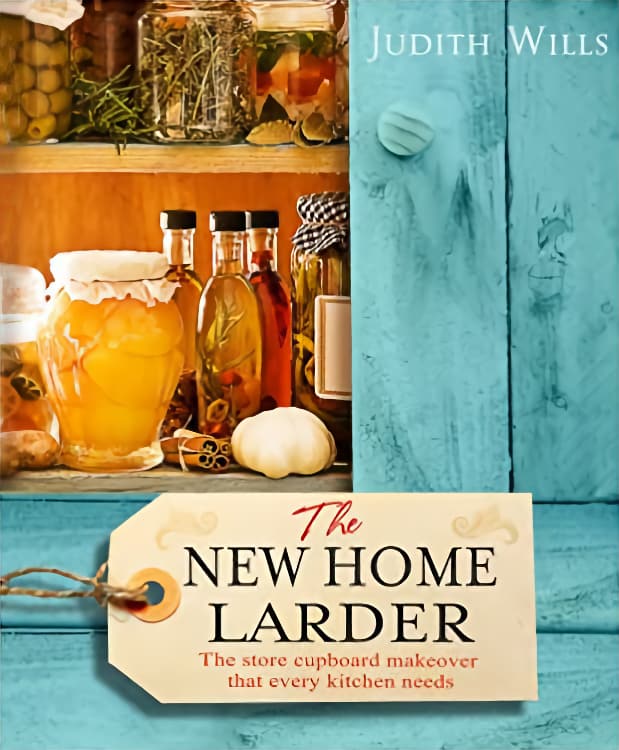New Home Larder, The
Wills, Judith
ISBN: 9781905811311
Publisher: Eden Project Books
In this world of convenience food and instant meals, and where fewer people than ever are able to even boil an egg without reaching for a recipe, Judith Wills has brought some commonsense to the table, or is that the larder, with her new book, The New Home Larder. The book provides a insight into which ingredients and the recipes that suit 'larder' cookery, along with practical advice that will allow you to be a more resourceful cook, and less reliant on what is 'fresh' in the fridge.
When we were sent the review copy of The New Home Larder by Judith Wills, we knew that she is probably one of the best selling food and healthy lifestyle authors in the UK. With this reputation, we were keen to see how she would take the reader from the comfort of the fridge-freezer and push them to think about being more thrifty and resource-wise and to create their own larder. After all, it was my generation that grew up with food being abundant and cheap, with food wastage skyrocketing to such an extent that it was calculated that an average Westerner throws enough food away each week to feed a third world family for over a month. It wasn't so in my grandparent's day, as even to this day my grandmother has her cupboards full of grains, chickpeas, beans, pulses and canned meat, and she is 94 years old! Such was the way that we used to buy food, something we now look at as been a bit too hard to be bothered with.
The book is divided into three parts, being Your larder, Recipes and Resources. The first part, Your Larder introduces us into the reasons that have allowed larders to make a comeback, from raising food prices through to a desire to be a better person, environmentally. Then we learn about the types of foods that make up a well stocked larder in Down To Details, this is followed by Larder Particulars, which covers clearing and cleaning, the health in the store cupboard, covering the health value of different ingredients and products.
The chapter Down To Details covers the types of food stuff that work in a larder. They are: Grains, Pasta, Noodles, Breads, Crackers and Biscuits, Crisps and Snacks, Sugar, Treacle and Syrups, Honey, Fish, Meat, Pulses, Nuts and Seeds, Vegetables and Fruits, Preserves, Herbs and Spices, Oils and Fats, Flavourers and Cooking Aids and Miscellaneous Ingredients. Each subject is covered with enough detail to allow you to decide what is best for your situation, like the minerals and vitamins that are contained within, or if it is high in fibre or likely to have high fat, salt or sugar content.
The Recipes chapter is full of well thought out recipes. It is not the Bastian of the hippy lifestyle, but is full of tasty ideas that make the most of the ingredients found in the larder and those bought fresh from the butcher or fishmonger. Some treats you will find are: Venison and Chestnut Casserole, Aubergine and Chickpea Stew with Couscous, Quince Jelly, Almond Butter Cake and, leaving the best to last, Brandy Truffles. I hope you can see the range of recipes that Judith has put into the book. It is a lovely book that allows you to both stock your own larder and get the most out of the ingredients in it.
